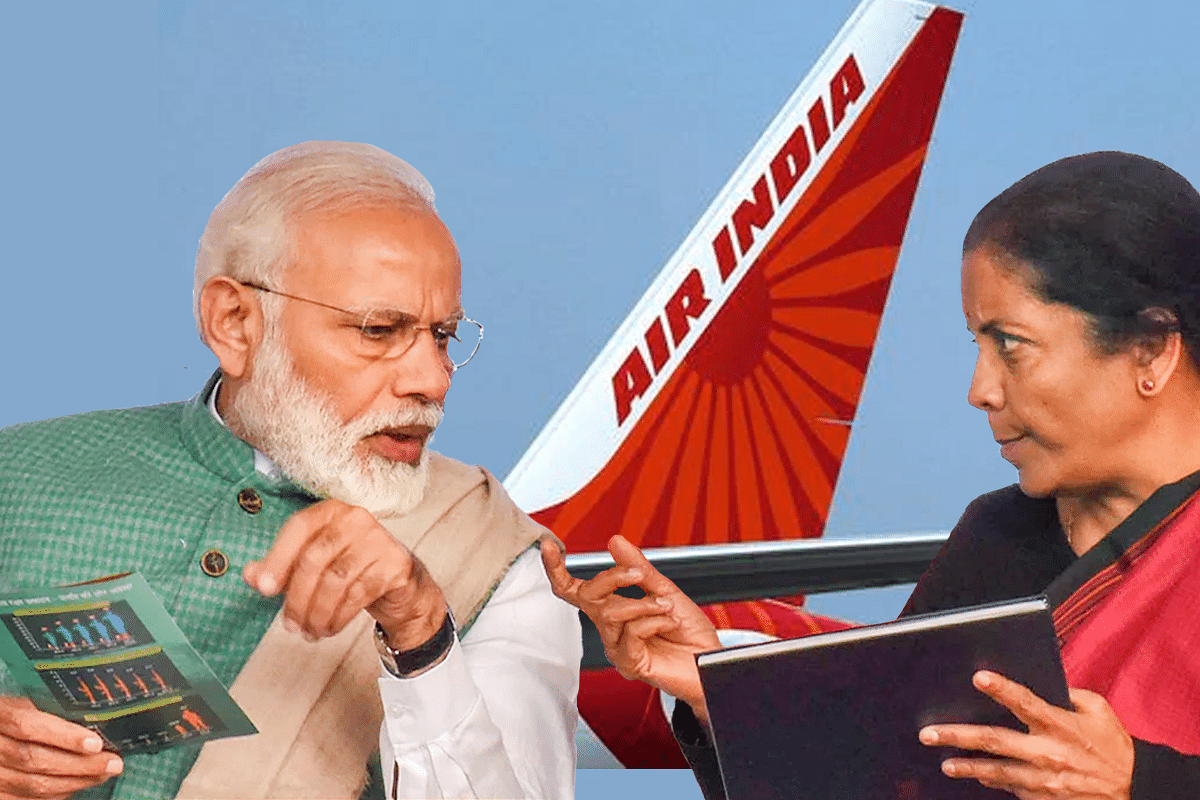Economy
State Is Critical In Some Sectors, Unwanted In Others: Why Modi Government's Privatisation Push Did Not Come A Day Too Soon
- The process of reducing state controls, attracting private risk capital and recalibrating the scope of the state in business, has been rejuvenated by the Narendra Modi government.

Prime Minister Narendra Modi and Finance Minister Nirmala Sitharaman
If today’s Gen Z, some of whom will be voting for the first time in the next few years, are told that their parents and grandparents may have waited five-seven years to get a BSNL phone connection, will they believe it?
Or, that their parents sat in rickety state transport buses running intercity journeys at an average of 40 to 50 kilometres per hour? Or, when their parents could afford to fly, there was the choice of only one airline?
Or, that with a single state broadcaster, they could watch only one programme at a time with many important world events never televised in India?
Surely, the answer to all of these questions will be an emphatic 'no'. And still, this was the life in India not very far back. We are talking about the 1980s and in some cases even the 1990s.
This is the life our parents’ generation lived. This is the life which many of the millennials themselves navigated, though they may not remember some of these experiences vividly.
Today, India has the highest per capita data consumption in the world and the lowest mobile data rates. Alongside state transport buses, there are private buses running on good roads and expressways.
One can also afford to fly more often now, with cheap tickets and deals available across many airlines. And of course, with a plethora of TV channels and a thriving Internet, the world is our oyster.
So, what has changed over the years? Very simply — the Indian economy became open to private players rapidly and in several sectors. The terms 'private participation' and 'privatisation' need not be confused, neither are they interchangeable.
The Indian economy adapted both, in some places creating a competition between the state-owned businesses and private players, and in some places letting the private sector take the lead.
Much of this happened after the 1991 liberalisation announced by the PV Narasimha Rao government and then under the Atal Bihari Vajpayee government.
Sectors like airlines, banking, insurance, pension, hospitality, media and many others became open to private players. The Vajpayee government specially worked on true privatisation, where a bunch of central public sector enterprises (CPSEs) were privatised.
During the Vajpayee government, despite the coalition pressures, many CPSEs were offloaded by the government to willing buyers. CPSEs in hospitality, food processing and many other areas, which really did not need government presence, were on this privatisation list.
Much more would have been achieved, but for the internal contradictions on economic policy of that National Democratic Alliance (NDA) constituents.
It is this very evolutionary process of reducing state controls, attracting private risk capital and recalibrating the scope of the state in business, which has been rejuvenated by the Narendra Modi government through the 2021 union budget.
The budget document very clearly spells out the policy for privatisation and asset monetisation.
A question that many critics of the government and even some status quoists raise is ‘why now’? The only answer is to that question is ‘if not now, when’?
The post Covid-19 world is getting rapidly reconfigured. The global geopolitics is getting more complex as the world becomes multipolar. This is a great time for India to reassess its priorities and leave a lasting imprint on the world in this decade.
We are already chasing a $5-trillion gross domestic produce (GDP) target by the middle of the decade. The government needs to be fully focused on catalysing the animal spirits of the economy, while making sure that external threats are combated and new opportunities spotted early and lapped up.
This also means that the government needs sharper and narrower areas to excel in. And this is where it can use the budget announcements on privatisation to focus on four strategic sectors.
These sectors are atomic energy, space and defence; transportation and telecommunication; power, petroleum, coal and other minerals; and banking, insurance and financial services.
In each of these four strategic areas, the government will maintain some CPSEs, while merging, selling or privatising others.
This roadmap is being produced by the NITI Aayog currently. Based on the recommendations, the government will undertake the specific processes as applicable to each CPSE. Outside of the four strategic sectors, the government proposes to exit all other CPSEs, which is a very bold intent.
Companies likes Air India, Bharat Petroleum (BPCL) and a few others are already in the process of being sold or privatised. These early successes will determine how much the government is able to push through its agenda in the next two-three years.
The Modi government should be lauded for not just talking about privatisation but also talking about it clearly and boldly. The government has left no ambiguity when it comes to drawing a roadmap for CPSEs.
There will, of course, be opposition, but it appears that the government is ready to take on that head on.
Besides, when people make jokes about public sector banks being closed for lunch and themselves bank with private players, should their opposition be taken seriously in the first place?
Introducing ElectionsHQ + 50 Ground Reports Project
The 2024 elections might seem easy to guess, but there are some important questions that shouldn't be missed.
Do freebies still sway voters? Do people prioritise infrastructure when voting? How will Punjab vote?
The answers to these questions provide great insights into where we, as a country, are headed in the years to come.
Swarajya is starting a project with an aim to do 50 solid ground stories and a smart commentary service on WhatsApp, a one-of-a-kind. We'd love your support during this election season.
Click below to contribute.
Latest